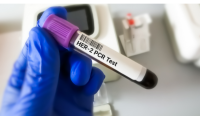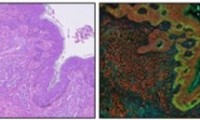-
FDA Approves New Herceptin Biosimilar for the Treatment of Multiple HER2-Overexpressing Cancers
- Source: https://www.pharmexec.com/authors/don-tracy-associate-editor
- 92
- May 4, 2024
-
AI-Powered Digital Imaging System to Revolutionize Cancer Diagnosis
- Source: drugdu
- 112
- April 29, 2024
-
Blood Test Accurately Predicts Lung Cancer Risk and Reduces Need for Scans
- Source: drugdu
- 109
- April 26, 2024
-
AI Tool Precisely Matches Cancer Drugs to Patients Using Information from Each Tumor Cell
- Source: drugdu
- 131
- April 23, 2024
-
Urine-Based Test Detects Head and Neck Cancer
- Source: drugdu
- 140
- April 20, 2024
-
Virtual Skin Biopsy Determines Presence of Cancerous Cells
- Source: drugdu
- 104
- April 16, 2024
-
Novartis Pays $150M to Nab a Phase 3-Ready Protein Degrader for Prostate Cancer
- Source: drugdu
- 77
- April 13, 2024
-
Bio-Rad and Alleghany Health Network partner for patients with solid tumour cancer
- Source: drugdu
- 76
- April 12, 2024
-
AstraZeneca, Daiichi Sankyo Drug Enhertu Becomes First Tumor-Agnostic ADC Cancer Med
- Source: drugdu
- 86
- April 11, 2024
your submission has already been received.
OK
Subscribe
Please enter a valid Email address!
Submit
The most relevant industry news & insight will be sent to you every two weeks.













